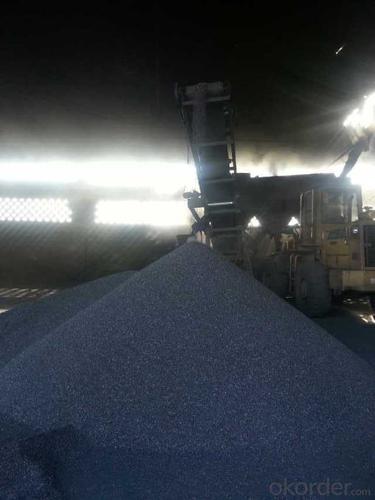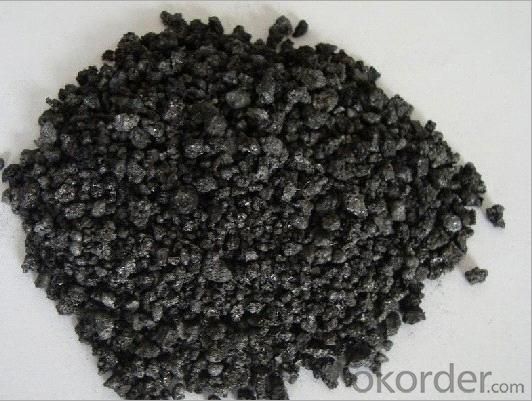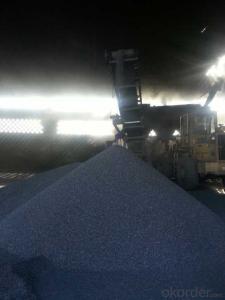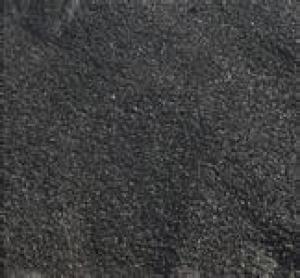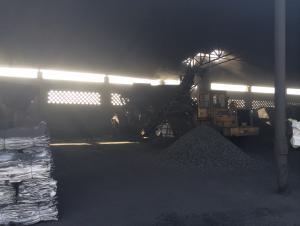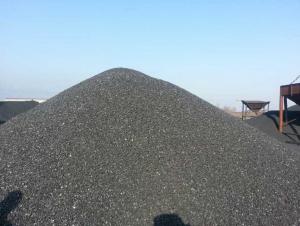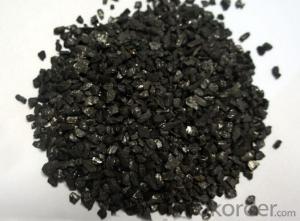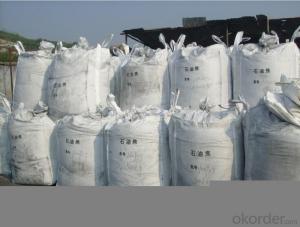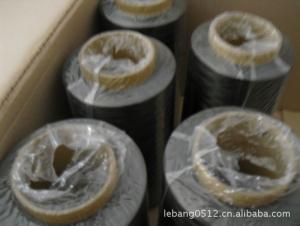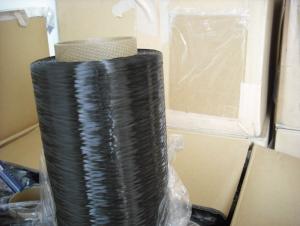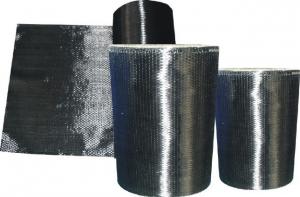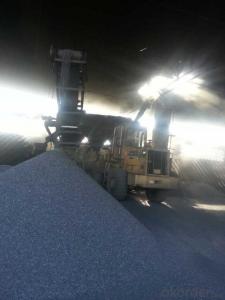FC90-95 Recarburizer/Carbon Additive CNBM
- Loading Port:
- Tianjin
- Payment Terms:
- TT OR LC
- Min Order Qty:
- 0 m.t.
- Supply Capability:
- 100000 m.t./month
OKorder Service Pledge
OKorder Financial Service
You Might Also Like
Packaging & Delivery
| Packaging Detail: | 25kgs/50kgs/1ton per bag or as buyer's request |
| Delivery Detail: | Within 20 days after receiving corect L/C |
Application
The Calcined Anthracite Coal/Gas Calcined Anthracite Coal/Carbon Raiser is mainly used in steelmaking in electrical stove, screening water, shipbuilding sandblast to remove rust. It can reduce the cost of steelmaking effectively by replacing the traditional petroleum coke of carburant.Also can improve the Carbon content in steel-melting and Ductile iron foundry.
Specifications
Calcined Anthracite
Fixed carbon: 90%-95%
S: 0.5% max
Size: 0-3. 3-5.3-15 or as request
Calcined Anthracite is produced using the best Anthracite-Taixi Anthracite with low S and P, It is widely used in steel making and casting.
General Specification of Calcined Anthracite:
PARAMETER UNIT GUARANTEE VALUE | |||||
F.C.% | 95MIN | 94MIN | 93MIN | 92MIN | 90MIN |
ASH % | 4MAX | 5MAX | 6MAX | 7MAX | 8MAX |
V.M.% | 1 MAX | 1MAX | 1.5MAX | 1.5MAX | 1.5MAX |
SULFUR % | 0.5MAX | 0.5MAX | 0.5MAX | 0.5MAX | 0.5MAX |
MOISTURE % | 0.5MAX | 0.5MAX | 0.5MAX | 0.5MAX | 0.5MAX |
Size can be adjusted based on buyer's request.
Pictures of Calcined Anthracite:
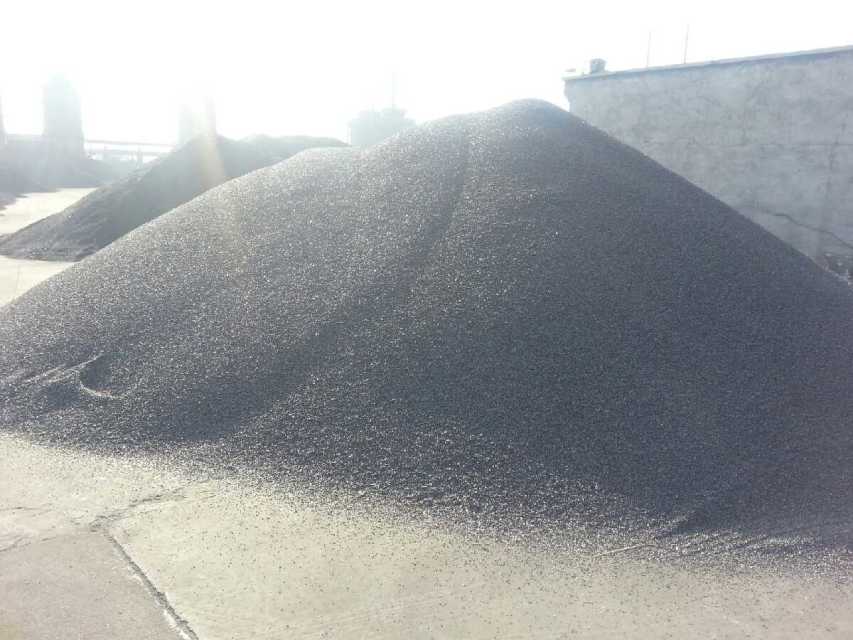
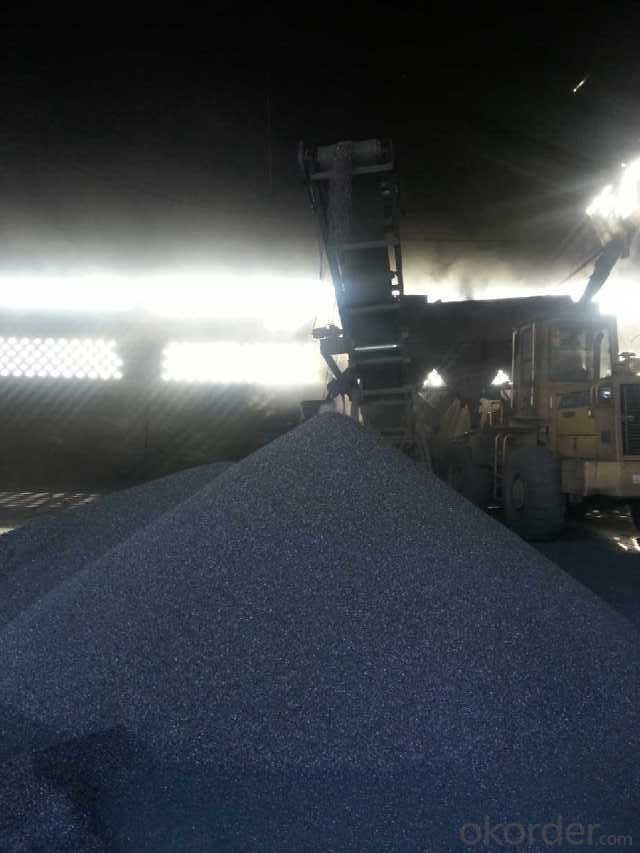

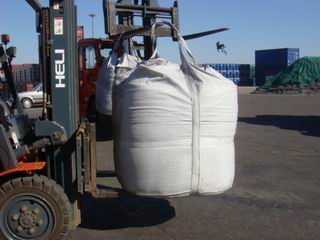
We can supply below furnace charges, please feel free to contact us if you areinterested in any of any of them:
Coke (Metallurgical, foundry, gas)
Calcined Anthracite with fixed carbon from 90% to 95%
Calcined Petroleum Coke
Graphite petroleum coke
Amorphous Graphite
- Q: When will amines be fertilized?
- Avoid high temperature applications. The temperature is below 20 DEG C when ammonium bicarbonate is relatively stable, high temperature or moisture in the product exceeds a certain standard, is easy to be decomposed into ammonia and carbon dioxide emissions in the air, causing loss of nitrogen fertilizer. According to the test results show that the winter crops better than urea and ammonium carbonate. Because the temperature is low in winter, the process of urea conversion is long, but the ammonium carbonate can be directly absorbed without conversion. It is beneficial to the early growth and fast growth of winter crops. In addition, when applied to the soil ammonium bicarbonate, ammonium ion dissociation can be directly by soil colloid adsorption, and urea to winter crop soil, urea was dissolved in the soil solution in the molecular state, but not by soil colloid adsorption, it is more likely to cause the loss of nutrientsThe use of ammonium bicarbonate does not mix with alkaline fertilizers, which can lead to loss of nitrogen nutrients, resulting in low fertilizer efficiency. Using ammonium hydrogen carbonate friends should know that not with urea and ammonium hydrogen carbonate mixed fertilizer, ammonium bicarbonate if mixed with urea, urea conversion rate will not only extend, and will accelerate the volatilization of urea.Ammonium bicarbonate extremely volatile, so to avoid the ground using ammonium bicarbonate, ammonium bicarbonate has strong corrosion on leaf blade, easy to burn, can not be used as a foliar spray. There is one thing to note is that if the soil drought, even deep application coverage, can not be dissolved in ammonium bicarbonate, better soil moisture using ammonium bicarbonate, can reduce the volatilization loss, improve efficiency
- Q: Is carbon a metal or non-metal?
- Carbon is a non-metal.
- Q: What are fullerenes?
- Fullerenes are a unique class of molecules composed entirely of carbon atoms arranged in a spherical or cage-like structure. They were first discovered in 1985 and have since gained significant attention due to their interesting properties and potential applications in various fields. The most well-known and extensively studied fullerene is the buckminsterfullerene, also known as C60, which consists of 60 carbon atoms forming a hollow sphere resembling a soccer ball. Fullerenes can also have different numbers of carbon atoms, such as C70, C84, or even larger clusters. What makes fullerenes remarkable is their exceptional stability and unique structure. The carbon atoms in a fullerene are interconnected through covalent bonds, forming a closed network of hexagons and pentagons. This arrangement gives fullerenes their characteristic shape and provides them with remarkable mechanical, thermal, and chemical stability. Fullerenes possess a wide range of fascinating properties that make them intriguing for scientific research and technological applications. For instance, they exhibit high electrical conductivity and can act as efficient electron acceptors or donors in organic electronic devices. They also have excellent optical properties, such as strong absorption and emission of light, which have led to their use in solar cells and photovoltaic devices. Moreover, fullerenes have shown potential in medical and biological applications. Their unique cage-like structure allows for encapsulation of other molecules within their hollow interior, making them ideal for drug delivery systems. Fullerenes also possess strong antioxidant properties, which make them potential candidates for various therapeutic treatments. In summary, fullerenes are a fascinating class of carbon-based molecules with unique structures and remarkable properties. Their versatility and potential applications in electronics, energy, medicine, and other fields continue to be explored, making them an exciting area of study in modern science.
- Q: How does carbon affect the formation of permafrost thawing?
- Carbon can have a significant impact on the formation of permafrost thawing. Permafrost is a layer of frozen soil, rock, and organic matter that remains at or below freezing for at least two consecutive years. It acts as a natural carbon sink, storing large amounts of organic carbon from dead plants and animals that have accumulated over thousands of years. When permafrost thaws, this stored carbon starts to decompose, releasing greenhouse gases such as carbon dioxide and methane into the atmosphere. The carbon released from permafrost thawing contributes to the overall increase in greenhouse gas concentrations, exacerbating climate change. Additionally, as permafrost thaws, it becomes more vulnerable to erosion and subsidence, leading to changes in the landscape and the release of even more carbon. This process can create a positive feedback loop, where the released carbon further accelerates permafrost thawing, resulting in more carbon emissions. Furthermore, permafrost thawing can also impact the stability of infrastructure built on frozen ground, such as roads, buildings, and pipelines, leading to significant economic and environmental consequences. In summary, carbon plays a crucial role in the formation and thawing of permafrost. The release of carbon from thawing permafrost contributes to climate change, accelerates the thawing process, and has various environmental and economic impacts. Addressing carbon emissions and finding ways to mitigate permafrost thawing is essential to combatting climate change and preserving the stability of these frozen ecosystems.
- Q: What are carbon-based superconductors?
- Carbon-based superconductors are materials that exhibit superconductivity, which is the ability to conduct electricity with zero resistance, at relatively high temperatures, using carbon as the main component. These materials have unique properties that make them promising candidates for various technological applications, such as energy storage and transmission systems.
- Q: How does carbon affect the formation of earthquakes?
- Carbon does not directly affect the formation of earthquakes. Earthquakes are caused by the movement of tectonic plates and the release of accumulated stress in the Earth's crust. Carbon, however, can indirectly influence the frequency and intensity of earthquakes through human activities such as mining and fracking, which can trigger seismic events in certain circumstances.
- Q: How does carbon contribute to the flavor of food?
- Carbon, in the form of charcoal or charred substances, can contribute to the flavor of food in several ways. Firstly, when food is grilled or roasted over charcoal, the carbon imparts a smoky flavor to the food, enhancing its taste and aroma. This smokiness is particularly desirable in foods like barbecued meats, vegetables, or even certain cheeses, as it adds a distinct and enjoyable element to the overall flavor profile. Furthermore, carbon can also act as a natural filter, absorbing and removing impurities from food and beverages. This filtration process can help eliminate unpleasant odors and flavors, resulting in a cleaner and more refined taste. For example, activated carbon is commonly used in the production of alcoholic beverages like whiskey or vodka to remove impurities and create a smoother, more flavorful drink. In addition, carbon can contribute to the development of desirable texture and color in certain foods. When sugar or other carbohydrates are heated, they undergo a process called caramelization, where the sugars react with heat to form a complex mixture of carbon compounds. This caramelization process creates rich, golden-brown hues and a unique depth of flavor, enhancing the overall taste experience. Lastly, carbon can also play a role in the fermentation process, which is essential in the production of various foods and beverages. During fermentation, microorganisms consume sugars and release carbon dioxide, which contributes to the texture, flavor, and carbonation of the final product. This is particularly evident in bread, beer, wine, and other fermented foods where the presence of carbon dioxide adds lightness, complexity, and effervescence to the flavor profile. In summary, carbon contributes to the flavor of food through its ability to impart smokiness, act as a natural filter, facilitate caramelization, and participate in fermentation processes. Its presence in various forms enhances the taste, texture, and overall enjoyment of a wide range of food and beverages.
- Q: How is carbon dating used to determine the age of fossils?
- Carbon dating is a scientific method that scientists use to figure out how old fossils and other organic materials are. It works because there is a special type of carbon called carbon-14 that is in the air and gets absorbed by living things when they're alive. When an organism dies, it stops taking in carbon-14 and the amount of it starts to go down over time as it breaks down. To find out the age of a fossil using carbon dating, scientists first take a small piece of the fossil. They then treat this piece with chemicals to get rid of any impurities and get the carbon out of the organic material. The carbon that is extracted is then turned into carbon dioxide gas, which is used to make graphite targets for measuring the levels of carbon-14. Scientists use a technique called Accelerator Mass Spectrometry (AMS) to count how many carbon-14 and carbon-12 atoms are in the sample. They then use the ratio of carbon-14 to carbon-12 to figure out how old the fossil is, based on the known half-life of carbon-14, which is about 5730 years. By comparing the amount of carbon-14 left in the fossil to the amount of carbon-14 in the air when the organism died, scientists can estimate the approximate age of the fossil. This method is especially useful for dating organic materials that are up to around 50,000 years old. For older fossils, scientists usually use other methods like potassium-argon dating or uranium-lead dating.
- Q: How is carbon used in the production of carbon nanowires?
- Carbon's unique properties make it a key component in the production of carbon nanowires. These nanowires are typically created through a process called chemical vapor deposition (CVD), in which a carbon-containing precursor gas is decomposed in a high-temperature environment. To carry out this process, a reaction chamber is utilized, where a carbon source like methane or ethylene is introduced. The precursor gas is then heated to a temperature above 600 degrees Celsius, causing it to decompose. This results in the release of carbon atoms that begin to deposit on a substrate material, such as a silicon wafer or metal catalyst. The carbon atoms in the precursor gas tend to form strong covalent bonds with each other, leading to the formation of a graphite-like structure. However, by carefully controlling the growth conditions, including temperature and pressure, the deposited carbon atoms can be arranged in a highly ordered manner to form nanowires. The use of carbon as the fundamental building block for nanowires offers several advantages, including exceptional thermal and electrical conductivity, as well as high mechanical strength. These properties enable carbon nanowires to exhibit unique characteristics, making them suitable for a wide range of applications, such as electronics, energy storage, and sensors. Overall, carbon plays a crucial role in the production of carbon nanowires as the raw material that undergoes decomposition and subsequent rearrangement to achieve the desired nanoscale structures.
- Q: How is carbon dioxide formed?
- Various natural and man-made processes contribute to the formation of carbon dioxide. Fossil fuel combustion, including the burning of coal, oil, and natural gas, is a primary source of carbon dioxide. When these fuels are burned for energy or transportation purposes, carbon from hydrocarbons combines with oxygen from the air, resulting in carbon dioxide formation. In addition, carbon dioxide is released through natural occurrences such as volcanic eruptions and respiration by living organisms. During volcanic eruptions, molten rock releases carbon dioxide gas, which is then released into the atmosphere. Similarly, living organisms, including humans, animals, and plants, produce carbon dioxide as a byproduct of respiration, where oxygen is taken in and carbon dioxide is expelled. Furthermore, deforestation and land-use changes play a role in carbon dioxide formation. Trees and plants absorb carbon dioxide through photosynthesis, but when forests are cleared, this natural carbon sink is lost, leading to an increase in atmospheric carbon dioxide levels. Moreover, industrial processes like cement production and chemical reactions in manufacturing also contribute to carbon dioxide release. These processes involve the breakdown or burning of carbon-containing compounds, resulting in the release of carbon dioxide as a waste product. Overall, carbon dioxide is formed through a combination of natural processes and human activities. However, the burning of fossil fuels remains the largest contributor to the heightened levels of carbon dioxide in the atmosphere.
Send your message to us
FC90-95 Recarburizer/Carbon Additive CNBM
- Loading Port:
- Tianjin
- Payment Terms:
- TT OR LC
- Min Order Qty:
- 0 m.t.
- Supply Capability:
- 100000 m.t./month
OKorder Service Pledge
OKorder Financial Service
Similar products
Hot products
Hot Searches




